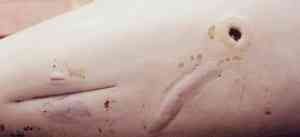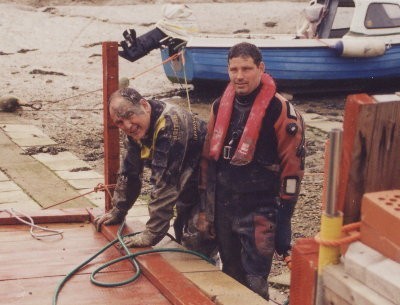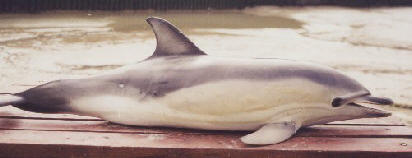|
EUROPEAN CETACEAN BYCATCH CAMPAIGN |
|
|
|
Anyone who knows the area will know that the conditions are like. The mud is waist deep, and the dolphin could only be approached via the mud flats (70 yards across). |
|
Geoff and Mark (plus families) watched the small dolphin going round and round as the tide went out. It became clear that the remaining water depth would not be sufficient to keep the animal completely wet until the next high tide, some 9 hrs away. |
|
|
|
( Pic : Mark - Left, Geoff - Right ) |
|
|
|
Slowly Geoff and Mark made their way through the mud channels, whilst Chris, one of the locals, carefully paid out the lifelines. |
|
The dolphin was skidded ashore, as Geoff and Mark made their way back slowly to the shore. |
|
Geoff and Mark took the dolphin to Dr. Paul Jepson (veterinary pathologist at the Institute of Zoology, London) that night, as they felt that better results could be obtained from a fresh carcass. |
|
|
|
[ Pic : Puncture wound ] |
|
|
|
The preliminary results showed that the young female had abscesses throughout her body, which could be felt through the skin |
|
There was a puncture wound under the animal, and Paul thought that the abscesses may have been caused by this. There were also signs that the dolphin had been caught in a gill net at some stage. Mark had assessed the dolphin to be |
|
in moderate condition. Paul agreed with the assessment and also agreed that, if the dolphin had lived, it would not have been a candidate for refloat. |
|
|
|
11 cultures were taken from the dolphin, and the results will be available in a few weeks. |
|
The same afternoon, in the same creek, the Fire Service had attempted to rescue a dog from the mud. Their attempt had been called off as it was considered to be "too risky". This demonstrates the incredible effort made by Geoff and Mark, in order to save the dolphin. |


